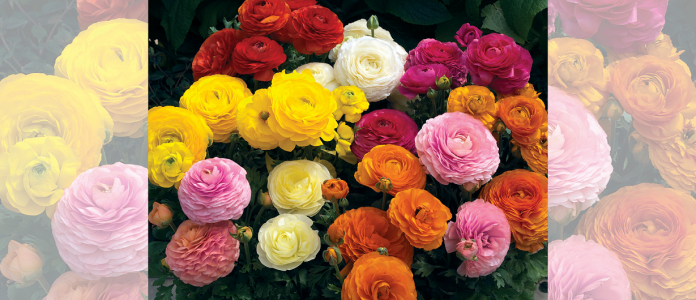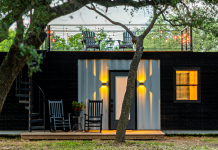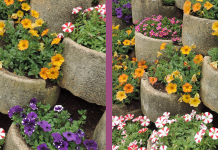Suffering from the winter blah’s? Feel the need for some colour and beauty? These cold hardy flowers and veggies should do the trick.
You may not feel much like gardening in July, but midwinter gardening is not as bad as you think. The secret is to garden when its warm, in the middle of the morning. Do some stretch exercises to loosen and warm up the muscles, and then get stuck in.
Raising the body temperature with outdoor exercise, like digging, actually improves our mood and health. The blood rushing around the body warms us up naturally. Unlike summer, gardening in winter is not a sweaty business.
Also, increased load-shedding means more hours without power. Its healthier to take out your frustrations with physical activity, especially if the end result is a beautiful or edible garden.
Now that you can see the merits of winter gardening, here are some cold hardy flowers and veggies for planting in the garden or in pots.
Before you start:
- Cold soil can be hard, so make it easy on yourself by watering the soil the day before.
- Dig in plenty of compost to improve the texture and fertility of the soil.
- Have frost cloth on hand to protect newly planted flowers or veggies until they have settled in. This usually takes about a week.
- Water the plants before you transplant. If the potting mix is dry, this sets up a positive-negative action whereby they cannot absorb the moisture from the surrounding soil.
Cold hardy flowers

Primula Obconica ‘Original’ is known as Florist’s primrose, for its clusters of large, conspicuous flowers in a range of vivid colours. It can be grown outdoors in a mixed border, among spring bulbs or in containers as well as indoors.
Plants are compact and sturdy, with attractively textured leaves. If planted in July as a spring flower, it will provide lush colour through to November. Plant in semi-shade, in fertile soil that drains well and keep the soil evenly moist, especially in hot weather. As indoor plants they need bright light, high humidity and water as soon as the top of the soil feels dry.

Cineraria Senetti is taller than the traditional cineraria, with huge heads of larger daisy-like blooms. Plants thrive in the cold and grow up to 60cm with a 45cm spread. Water regularly so that the soil doesn’t dry out and boost flowering with a liquid fertiliser twice a month. After the first flush of blooms, cut back by 50 percent to encourage a second flush.

If you missed the spring bulb planting deadline and now wish you had some spring colour, look out for the potted Ranunculus ‘Maché. Plants are available as a pot specimen or as a six-pack of seedlings. The strong stemmed plants are vigorous, producing large flowers offset by dark green leaves. This container grown variety likes partial sun, regular watering and can also be kept indoors in good light. Plants grow 30cm high and 25cm wide.

Calibrachoa MiniFamous ‘Pink Hawaii’ as a spectacular filler for patio pots and hanging baskets. It’s a tropical beauty that produces an abundance of dazzling cerise-pink petals, with a splash of gold and deep purple eye. Plant it in pots around 30cm in diameter so that the foliage can spill over the sides. It is super easy to care for too. Make sure it gets plenty of morning sun, water once or twice a week in winter, whenever the top 5cm of soil feels dry to the touch. Feed with a liquid fertiliser like Margaret Roberts Organic Supercharger once a month.
Winter edibles

Simply Salad Pro San is a classic Asian salad mix of mizuna and komatsuna mustard greens. Komatsuna, is also known as Japanese mustard spinach, although it is a member of the brassica family. Komatsuna leaves have a spicy, green mustard flavour, but the younger they are picked the sweeter and milder the flavour. Use the young leaves to give salads a flavourful kick, lightly braise in stir fries or wilt for pastas. Older leaves have a stronger flavour and require longer cooking. Both mizuna and komatsuna leaves are rich in minerals and vitamins A, C, and K.
The seed is supplied in a precision pellet which makes sowing fast and simple. Germination is quick and baby leaves can be cut 25-35 days from sowing or at full leaf stage 35-45 days from sowing. Cut leaves 5 cm above soil level and foliage will regrow to junior leaf size some10 days later.
Order online from www.gropak.co.za

“Kale Storm” is a ready-to harvest mix of kale varieties with purple, green and blue leaves. It grows 30 to 60cm high and wide. It can be grown as a patio edible in a container or planted in the garden. It is as decorative as it is edible and lasts longer than lettuce in a patio planter because it doesn’t bolt with warmer temperatures.
TEXT: Alice Coetzee






